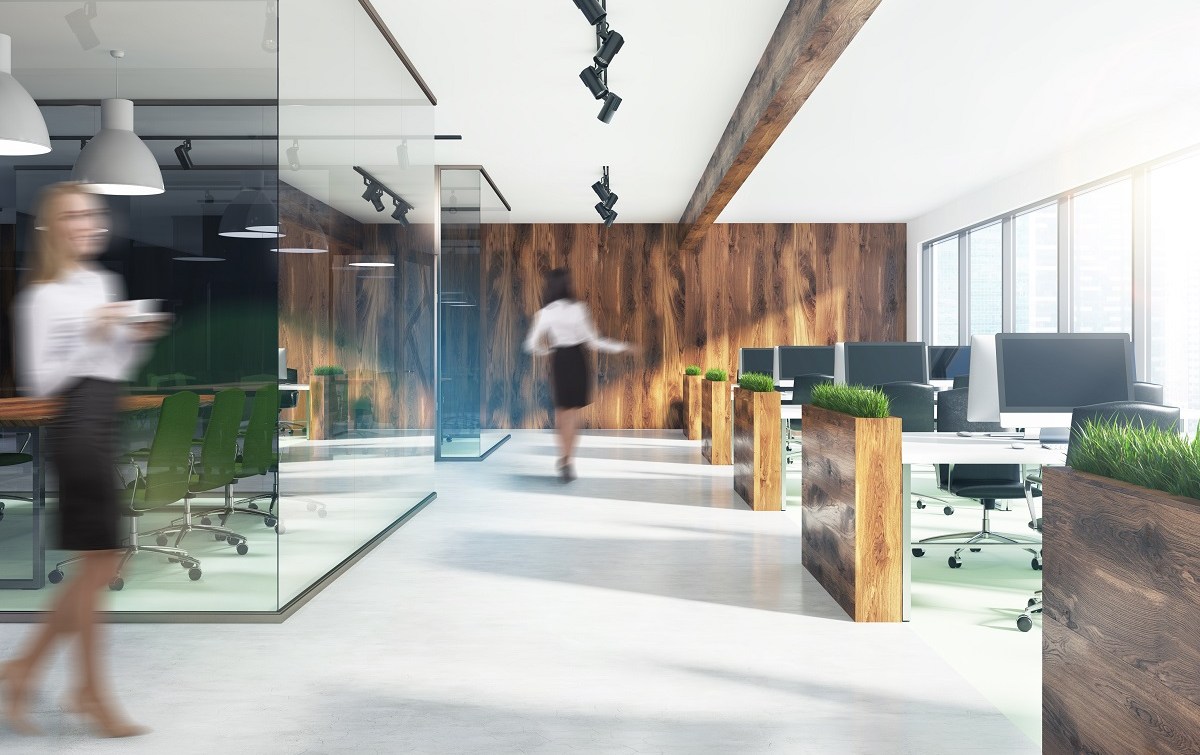A while ago, the first thing that ‘coworking space’ brought to mind was an image of the digital nomad traveling around the U.S. with only a laptop to their name. Throw in a few old metal desks, rickety chairs, and a room full of bull pens from the movie Wall Street, and that was the coworking office space of yesteryear.
Fast forward to today, and coworking space has evolved as quickly as Airbnb and Uber. In fact, in less than 10 years, coworking office space has grown to become one of the hottest sectors of today’s commercial real estate market.
Why are Coworking Spaces so Popular?
Thanks in large part to the widespread availability of high-speed internet, coworking space is now an appealing option for freelancers, solopreneurs, startups, and publicly held corporations seeking small, flexible staffing space for business incubators. The open office environment of coworking space makes it easy for people to collaborate and share ideas, and creates a dynamic energy not found in traditional office space.
Typical features of coworking office spaces today include:
- Full-service and fully-staffed, turnkey office space
- Flexible use plans by the day, week, month or year
- Affordable locations in upscale areas, open 24/7
- Opportunity to work and socialize with like-minded people
- Pet-friendly policies
- Amenities such as coffee, snacks, bike storage or gym
Where Do You Find Coworking Office Space?
Much of an organization’s success depends on the image it projects. Choosing the right coworking space in the right location plays a big role in sending the right message to clients and customers.
Coworking space can be found in Class A office buildings in New York City, warehouse-loft conversions in San Antonio, and smaller three-flats in Portland or Seattle, it all depends on your taste and preferences.
According to a recent coworking report by Statista, Manhattan and California have a combined total of over 10 million square feet of coworking space. But it’s not just high-tech workers in Silicon Alley and Silicon Valley that are driving demand for coworking office space. The top 20 coworking markets in the U.S. include entrepreneur-friendly cities such as Austin and Houston, Phoenix, Fort Lauderdale and West Palm Beach.
Who Uses Coworking Spaces and What Amenities Do They Look For?
The people and businesses that use coworking space can include:
- Digital workers needing a short-term home base
- Business startups seeking to avoid the distracting coffee shop scene
- Entrepreneurs looking for a dynamic blend of energy and synergy
- Large corporations wanting incubator space for the next cutting-edge service
In addition to finding affordable turnkey space in trendy locations, coworking space also attracts users with people-friendly amenities. A recent article from Allwork.space reports that the top favorite coworking amenities include:
- Treats, eats, and curated beverages such as locally roasted coffee
- Personal care services including manicures, pedicures, and yoga
- Climbing walls
- Wellness and Zen meditation rooms
- Pet-friendly coworking spaces with outdoor dog parks
Are There Drawbacks to Using Coworking Spaces?
While there are a lot of positives to coworking spaces, it’s important to realize that not every business is a good match for a coworking environment.
White-collar professional service firms in law and finance may find that leasing traditional space in a Class A office building is a better match for the company’s business image, employees, and client base. Solopreneurs and business startups should also think about their work habits before locating to a coworking space. Open floorplans that encourage interaction aren’t for everybody. Sometimes workers find themselves donning a pair of headphones and locating to the furthest corner of the room to be able to focus without distractions and get the job done. While open-office layouts and coworking spaces are widespread nowadays, people still yearn for privacy, according to a recent CommercialCafe survey.
What’s the Future Outlook for the Coworking Trend?
The rapid growth of online platforms such as Airbnb, Uber, and Upwork show that the freelance economy is here to stay. And nothing helps contribute more to the new entrepreneurial economy like coworking office space. All around the world, coworking is growing by leaps and bounds.
A survey conducted last year by GCUC found that the Asia/Pacific & India region leads the world with nearly 4,000 coworking locations. The U.S. comes in second with 3,200 locations, while the coworking market in Europe comes in a close third place with nearly 3,100 locations.
Entrepreneur.com sees three trends that will drive the growth and demand for coworking space from 4,000 to over 30,000 locations during the next 10 years:
- National coworking office developers expanding into secondary markets such as Indianapolis, Cincinnati, and Detroit. Businesses continue to realize that people working online can choose where they want to live – and often times that isn’t in high-cost coastal urban areas. A RentCafe study shows that apartment rents in San Francisco cost four times as much compared to renting a larger place in Indianapolis, so digital workers might prefer to settle down in a more affordable location.
- Coworking space will become more niche-specific to meet the demand from high-growth business sectors such as online retail technology, agritech businesses, and cutting-edge business incubators and accelerators.
- R&D is incredibly competitive and complex, and the collaborative nature of coworking space provides big companies with the edge that they need to ‘think outside of the office.’ Startups and corporate innovation teams will have to work together to further innovation in the coworking industry.









